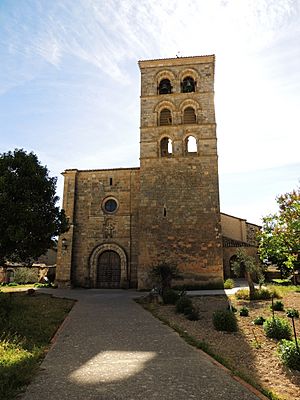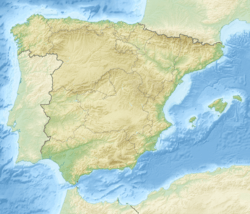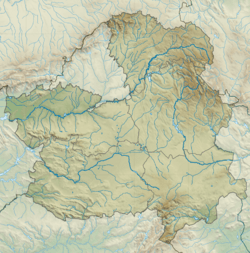Valdeolivas facts for kids
Quick facts for kids
Valdeolivas, Spain
|
|
|---|---|

Church of the Assumption of Valdeolivas
|
|
| Country | |
| Autonomous community | |
| Province | |
| Municipality | Valdeolivas |
| Area | |
| • Total | 46 km2 (18 sq mi) |
| Population
(2018)
|
|
| • Total | 203 |
| • Density | 4.41/km2 (11.43/sq mi) |
| Time zone | UTC+1 (CET) |
| • Summer (DST) | UTC+2 (CEST) |
Valdeolivas is a small and quiet municipality located in the heart of Spain. It is part of the province of Cuenca, which is in the region of Castile-La Mancha. This charming place is known for its peaceful atmosphere.
In 2004, a count of the people living there, called a census, showed that Valdeolivas had 269 inhabitants. By 2018, the population was recorded as 203 people. This means it is a very small community.
Contents
Where is Valdeolivas?
Valdeolivas is found in the eastern part of central Spain. It is part of the Cuenca province. This province is known for its beautiful natural landscapes. The region of Castile-La Mancha is famous for its wide-open spaces. It also has a rich history and traditional Spanish culture.
Geography and Surroundings
The municipality covers an area of about 46 square kilometers. This is roughly the size of 4,600 football fields. The land around Valdeolivas is often hilly. It features fields and some forests. The climate here is typical for inland Spain. This means hot, dry summers and cold winters.
Natural Beauty
The area around Valdeolivas is perfect for exploring nature. You might find different types of plants and animals here. Many people enjoy hiking or just enjoying the quiet countryside. It's a great place to see traditional Spanish landscapes.
Life in Valdeolivas
Life in a small municipality like Valdeolivas is often very different from big cities. People usually know each other well. There is a strong sense of community. The pace of life is slower and more relaxed.
Community and Culture
Even though it is small, Valdeolivas has its own unique charm. The main building in the municipality is often the local church. The Church of the Assumption, shown in the picture, is a key landmark. These churches are usually very old and beautiful. They are important for the community.
Local Traditions
Small towns in Spain often have special traditions and festivals. These events are a big part of life. They bring people together. They celebrate local history, saints, or harvests. These traditions help keep the local culture alive.
See also
 In Spanish: Valdeolivas para niños
In Spanish: Valdeolivas para niños



